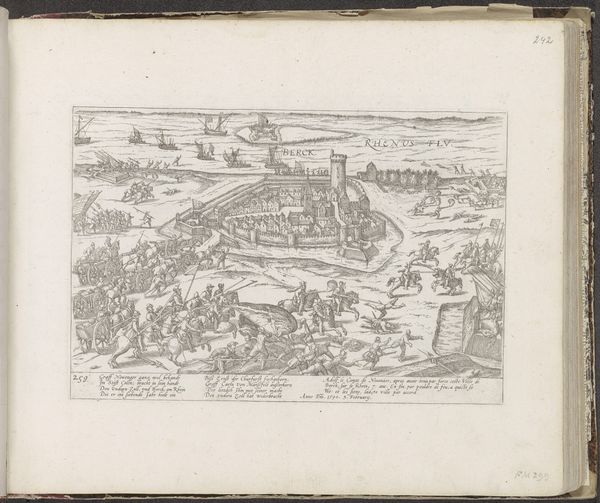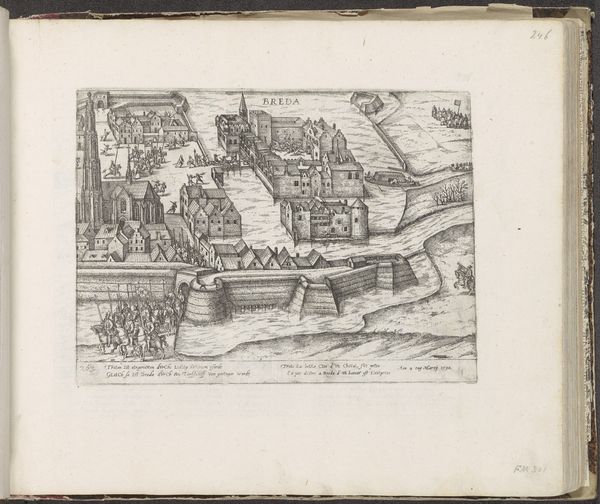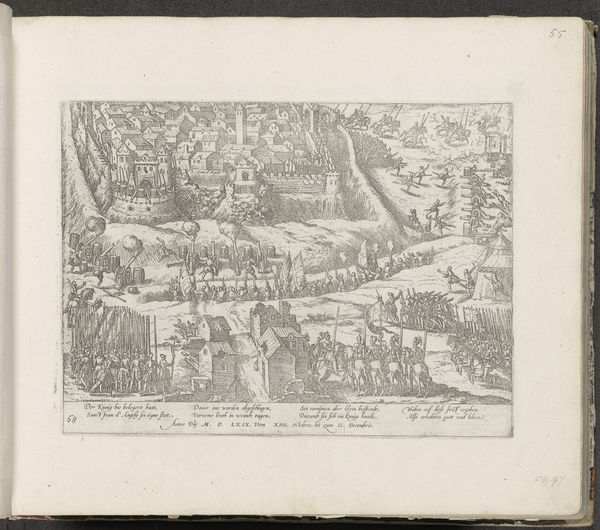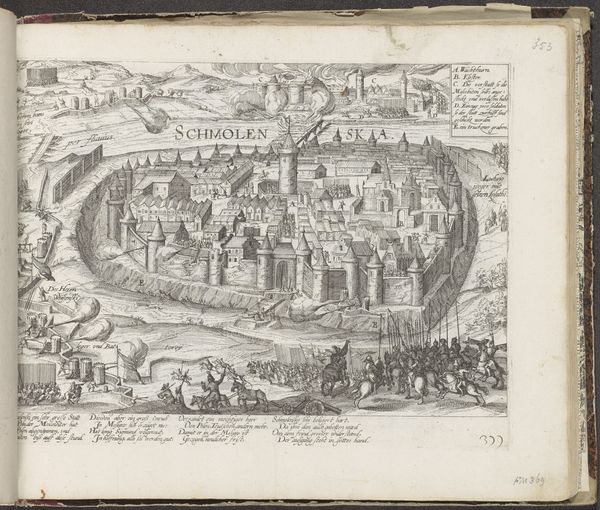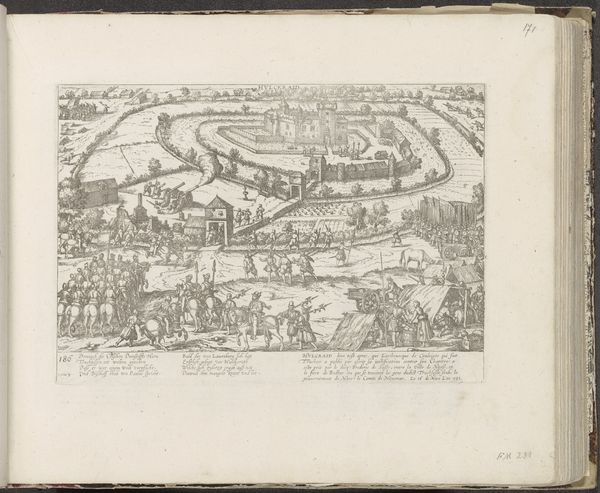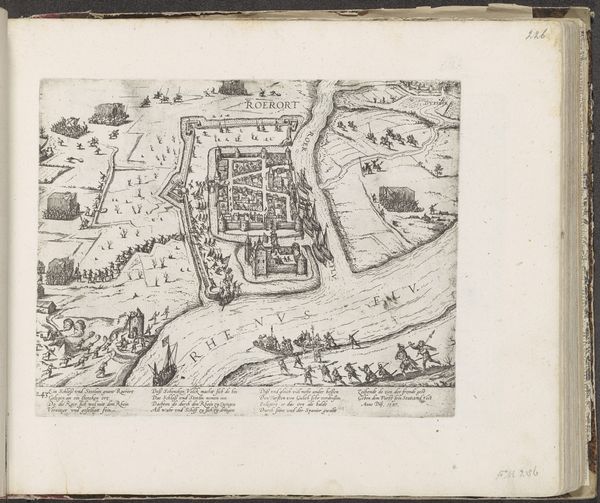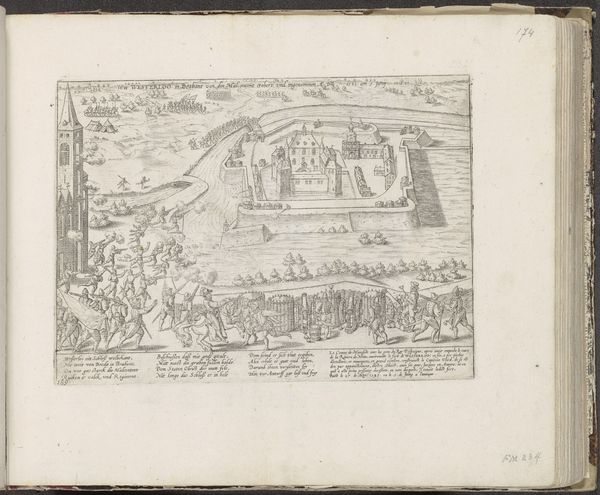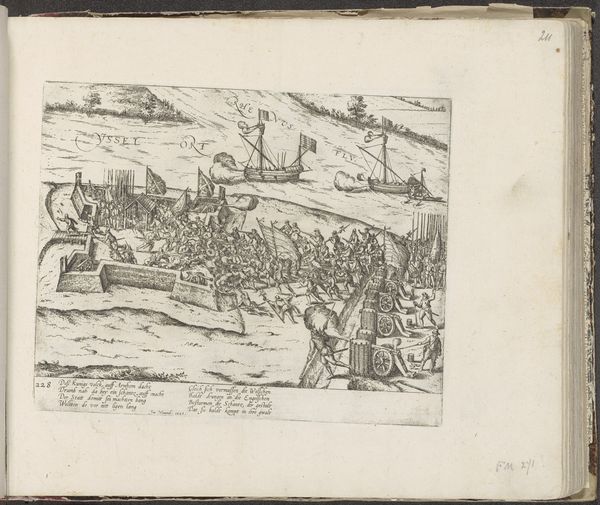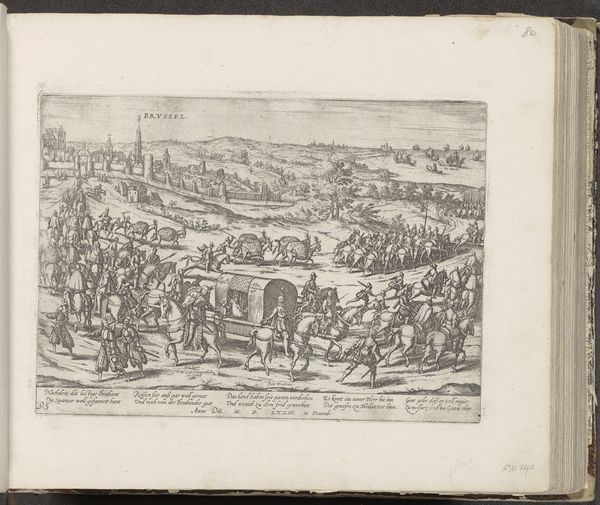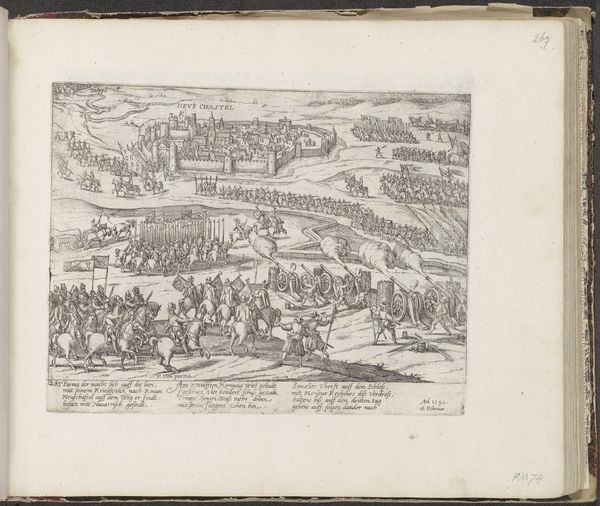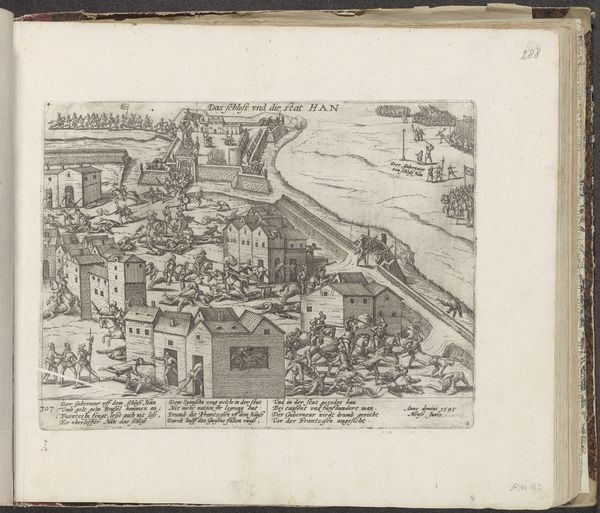
Dimensions: height 223 mm, width 278 mm
Copyright: Rijks Museum: Open Domain
Curator: This is "Overgave van Wachtendonk aan Mansfelt, 1588," an engraving created between 1588 and 1591 by Frans Hogenberg. Editor: It's overwhelmingly about line—rigid lines defining everything. Even at this scale, I feel the immense detail; you see every individual figure. Curator: Indeed. As a print, this work disseminated information widely, shaping public perceptions of the event it depicts. It represents a critical moment during the Eighty Years' War. This piece functions as historical documentation. Who gets to define and narrate the "official" story of war, and from what perspective? Hogenberg's choices speak volumes. Editor: You can practically feel the weight of that metal plate bearing down on the paper. The lines are so clear and dense, producing incredible texture in this medium. How many prints like this might have circulated and shaped public sentiments, fed by those labor-intensive engraving practices? Curator: The narrative positions Mansfelt, the commander of the Spanish forces, as the figure of authority. What might a local perspective tell us about the inhabitants’ experiences of siege and surrender? Where are their stories represented? The composition emphasizes a top-down, hierarchical perspective on power dynamics. It omits the voices of those most vulnerable during wartime. Editor: Absolutely. By carefully etching the scene, the artist physically transferred the war and ensuing handover into something tangible and reproducible, something almost "consumable." I also wonder about the materials used: paper stock, ink composition, tools for etching the copper. Those details say a lot about distribution channels. Curator: Precisely. This print acted as propaganda, framing the conflict within the visual language that favors certain rulers. I wonder, in whose homes would it hang? Who would feel a sense of validation upon viewing it, and whose sense of oppression would be intensified? It's important to see the material of history and engage critically with the perspectives embedded in it. Editor: Yes, because in its physicality as print, it gained tangible power. Thinking about all those material elements -- tools, paper, ink – gives shape to history beyond official declarations and exposes social underpinnings within its context. Thank you for offering up perspectives on this piece, which makes me see past lines to see a story about layers upon layers. Curator: The conversation between form and historical moment continues to resonate!
Comments
No comments
Be the first to comment and join the conversation on the ultimate creative platform.
